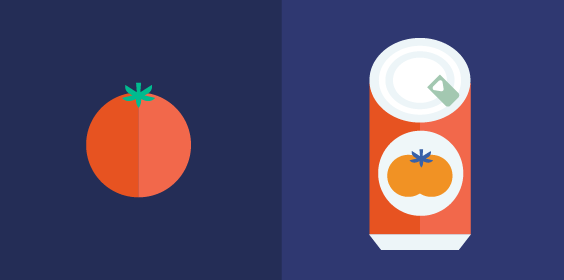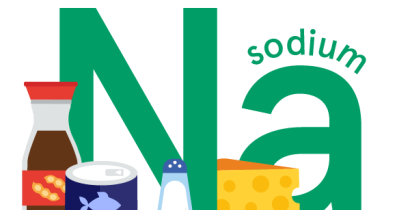The DASH diet can help with high-blood pressure
Last Updated : 10 August 2018
What is DASH?
The Dietary Approaches to Stop Hypertension (DASH) diet was developed by the US National Institutes of Health, as a life-long approach to heart-healthy eating. DASH recommends eating plenty of vegetables, fruits, whole grains, fat-free or low-fat dairy products, fish, poultry, beans, nuts, and vegetable oils; limiting foods high in saturated fat (such as processed meat, full-fat dairy products, and tropical oils such as coconut and palm oils); and limiting sugar-sweetened beverages and sweets.1 DASH also recommends a maximum daily sodium intake of 2300 mg.
Health benefits of the DASH diet
Research has shown that DASH offers an effective nutritional approach towards prevention and treatment of high-blood pressure (hypertension), which is a major risk factor for heart disease and stroke.2,3 A trial showed that reducing sodium intake even further to 1500 mg per day (lower sodium DASH diet) may provide additional benefits in terms of lowering blood pressure even further than the standard DASH diet described above.4 Furthermore, in a clinical trial of diabetic patients over eight weeks, this diet was associated with reduced cardiometabolic risk measurements, specifically weight, waist circumference and cholesterol levels.5 With the scientifically proven health benefits this diet offers, and being very much in line with current dietary recommendations in Europe, DASH is a balanced dietary strategy that could be adopted to achieve a healthier diet and lifestyle.
Food recommendations
To support people following this diet, DASH provides a recommended daily or weekly number of servings across different food groups to achieve a standard 2000 kilocalories energy intake per day (Table 1). The diet is flexible as the number of servings of different foods can be easily adjusted to meet the specific energy needs of the individual by taking into account desired weight changes and physical activity levels.1
| Food group | Number of servings per day/week | Examples of one serving |
| Grains | 6-7 servings per day | 1 slice whole wheat bread, ½ cup cooked wholegrain cereal, rice or pasta |
| Vegetables | 4-5 servings per day | 1 cup of raw leafy green vegetables, ½ cup raw or cooked vegetables |
| Fruits | 4-5 servings per day | 1 medium fruit, ½ cup fresh, frozen or canned fruit, a small glass of juice (125 ml) |
| Dairy | 2-3 servings per day | 1 cup of milk or low fat yoghurt (240 ml), 40 g low fat cheese |
| Lean meat, poultry or fish | 6 servings or fewer per week | Maximum 85 g per serving |
| Fats and oils | 2-3 servings per day | 1 teaspoon vegetable or olive oil, 1 teaspoon margarine, 2 tablespoons salad dressing |
| Nuts, seeds and legumes | 4-5 servings per week | 50 g nuts, 2 tablespoons seeds, or 1/2 cup cooked beans |
| Sweets | 5 servings or fewer per week | 1 tablespoon sugar or jam, 1/2 cup sorbet, or 1 soft drink (250 ml) |
Table 1. DASH guide to the number of daily and weekly food servings for a 2000 kcal/day energy intake (adapted from Reference 1).
References
- National Institute of Health (NIH) DASH Eating Plan
- Appel L.J, et al. (1997) A clinical trial of the effects of dietary patterns on blood pressure. DASH Collaborative Research Group. The New England Journal of Medicine, 336(16), 1117-24.
- World Health Organization (2017). Factsheet on Cardiovascular diseases (CVDs)
- Svetkey LP et al. (1999) The DASH Diet, Sodium Intake and Blood Pressure Trial (DASH-sodium): rationale and design. Journal of the American Dietetic Association, 99(8), S96-S104.
- Azadbakht, L., et al. (2011) Effects of the Dietary Approaches to Stop Hypertension (DASH) eating plan on cardiovascular risks among type 2 diabetic patients: a randomized crossover clinical trial. Diabetes Care, 34(1), 55-57.


